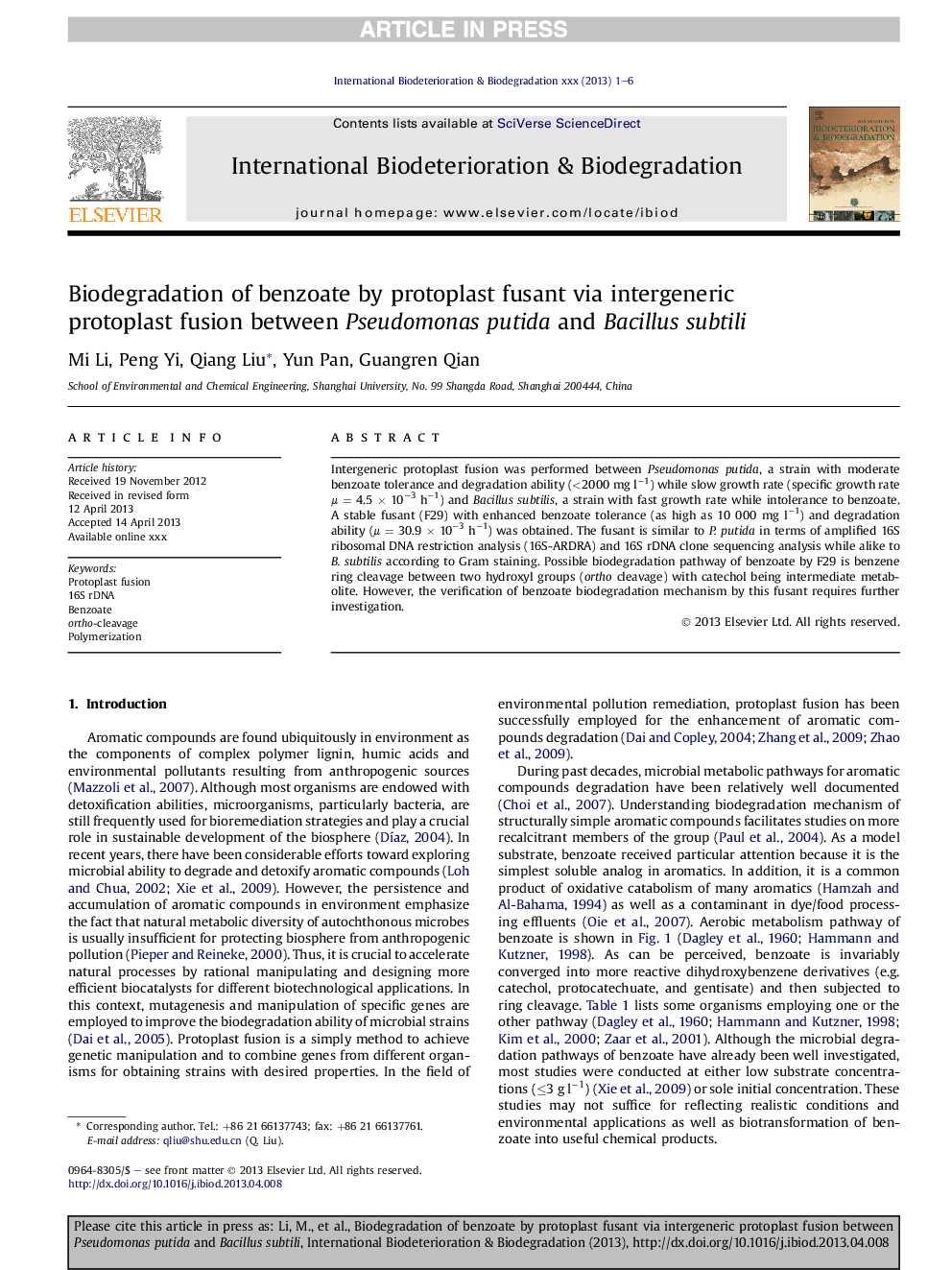| Article ID | Journal | Published Year | Pages | File Type |
|---|---|---|---|---|
| 6289372 | International Biodeterioration & Biodegradation | 2013 | 6 Pages |
Abstract
Intergeneric protoplast fusion was performed between Pseudomonas putida, a strain with moderate benzoate tolerance and degradation ability (<2000 mg lâ1) while slow growth rate (specific growth rate μ = 4.5 Ã 10â3 hâ1) and Bacillus subtilis, a strain with fast growth rate while intolerance to benzoate. A stable fusant (F29) with enhanced benzoate tolerance (as high as 10 000 mg lâ1) and degradation ability (μ = 30.9 Ã 10â3 hâ1) was obtained. The fusant is similar to P. putida in terms of amplified 16S ribosomal DNA restriction analysis (16S-ARDRA) and 16S rDNA clone sequencing analysis while alike to B. subtilis according to Gram staining. Possible biodegradation pathway of benzoate by F29 is benzene ring cleavage between two hydroxyl groups (ortho cleavage) with catechol being intermediate metabolite. However, the verification of benzoate biodegradation mechanism by this fusant requires further investigation.
Related Topics
Life Sciences
Environmental Science
Environmental Science (General)
Authors
Mi Li, Peng Yi, Qiang Liu, Yun Pan, Guangren Qian,
